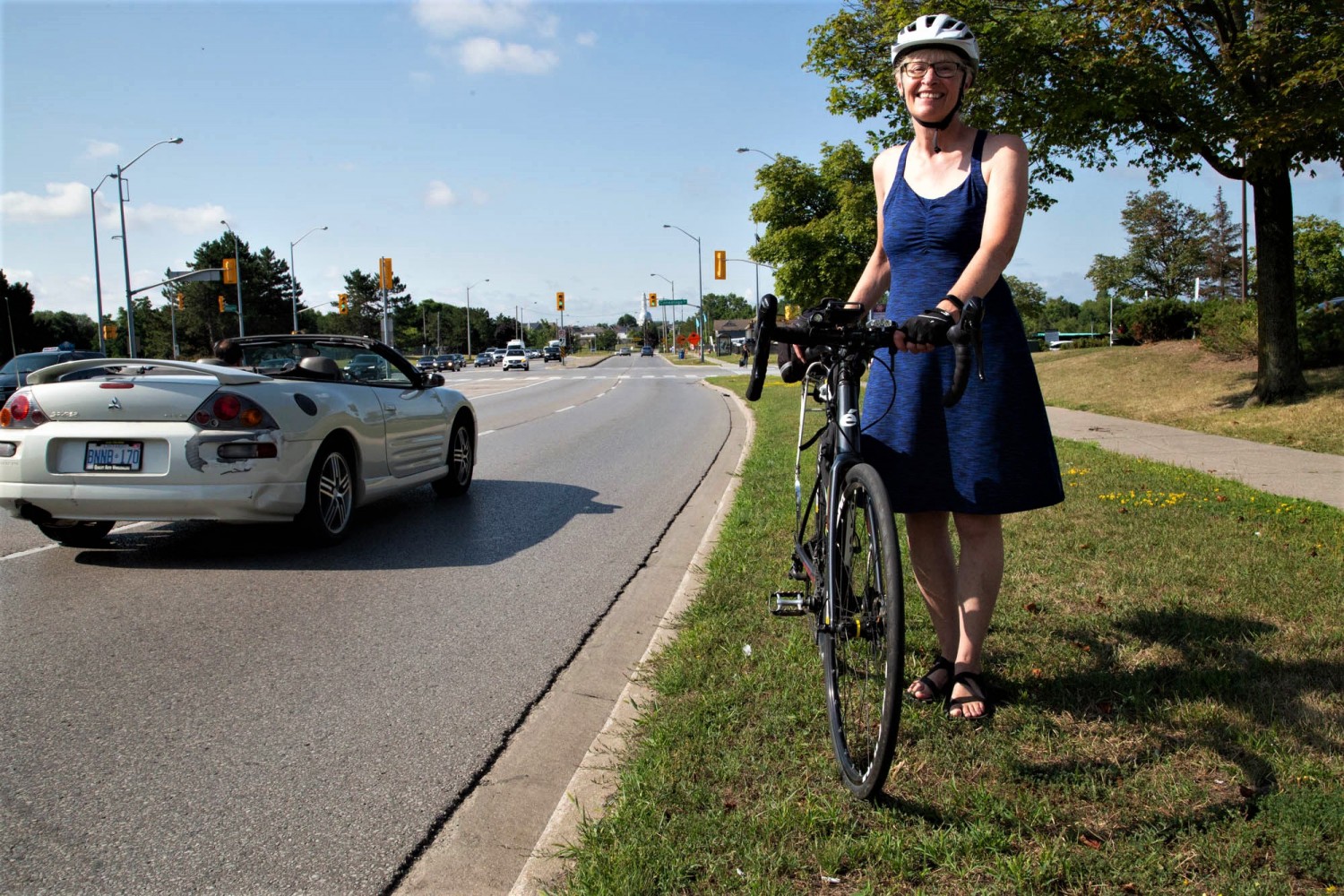
Brampton cyclists fight an uphill battle in the car-crazy city; bike-friendly communities enjoy a different reality
Brampton’s 2040 Vision, Living the Mosaic, speaks of creating “complete neighbourhoods.” The concept is pretty simple: include the full breadth of infrastructure uses within a single neighbourhood — single-family homes, mid-rise and high-rise homes, office space and on-street retail — rather than limiting the uses allowed within a given area. This creates more dynamic neighbourhoods where people can live, work, shop and play.
Transportation in this style of neighbourhood isn’t limited to motorized vehicles. Active transportation — walking and cycling — is provided for by giving these activities dedicated spaces.
Brampton is pedalling toward that goal with the help of its Cycling Advisory Committee. The citizen body will soon present its Active Transportation Master Plan to the Planning Committee. Featured heavily in the master plan is an ambitious cycling network crisscrossing the city from border to border.
“There have been references to active transportation in the Transportation Master Plan, which is sort of overarching, but this is the first time that Brampton has had an Active Transportation Master Plan,” Dayle Laing told The Pointer. An avid cyclist herself — she rode her bike to a coffee shop for her interview — Laing is a member of the Cycling Advisory Committee. “It’s actually very exciting, and it’s an important step to have the city realize that active transportation needs to be considered across many different areas.”
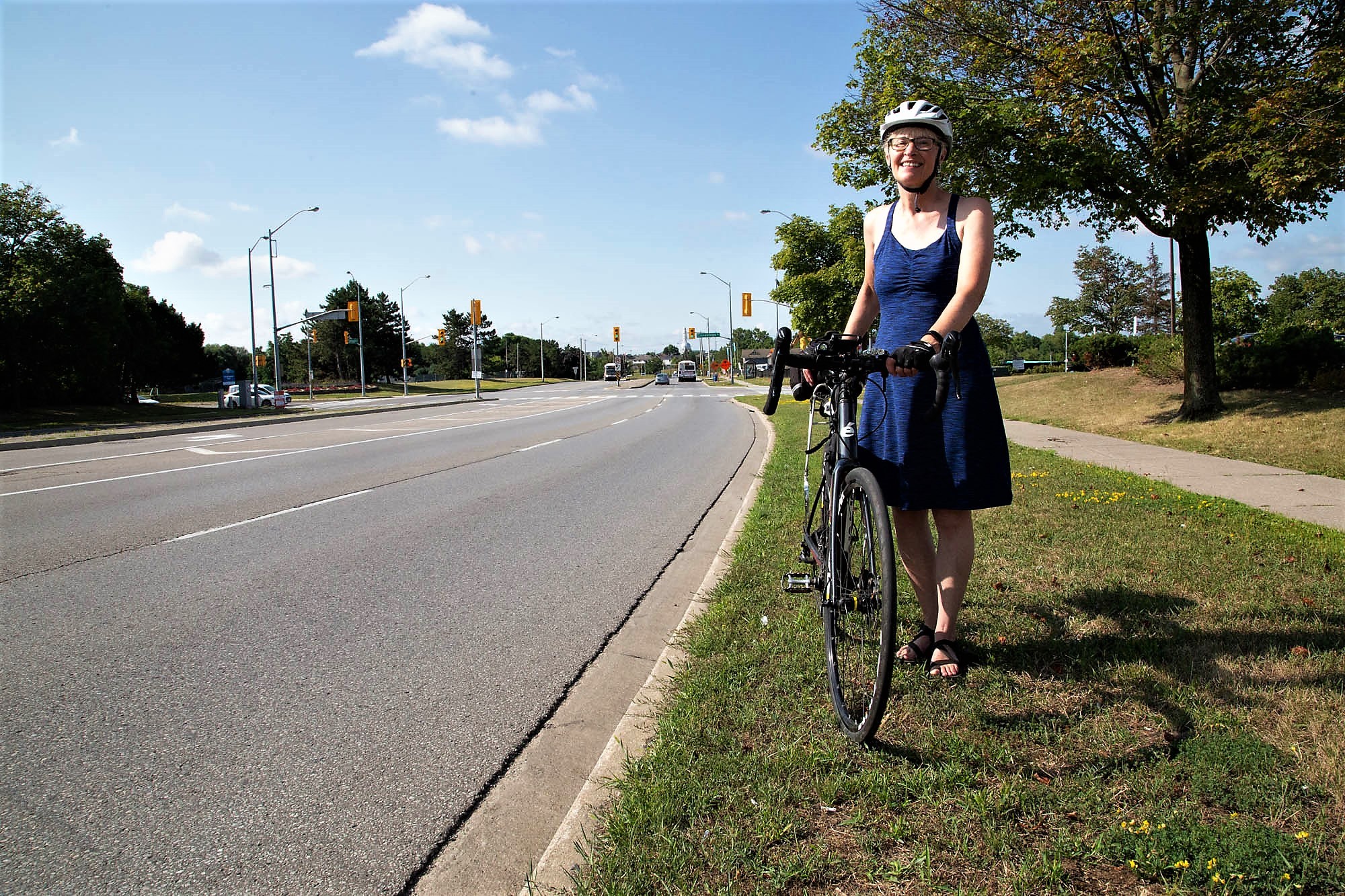
Brampton resident Dayle Laing enjoys cycling in a city built for cars
Brampton’s traditional role as a bedroom community, where more than 63 percent of residents leave the city to go to work, means that active transportation has not been an option for most commuters. People are far more likely to cycle or walk to their job if it is within a reasonable distance. It’s highly unlikely that a resident would cycle, for example, from Brampton to Toronto.
That leaves the average worker with two options: transit or car commuting. Perhaps due to inadequate regional transit, 90 percent of those who leave the city to work drive there. Even travelling within Brampton, most people are chained to their cars. Brampton has followed the same planning style as many post-war North American cities: sprawling suburban neighbourhoods designed around the car, with streets wide enough to accommodate parked vehicles, and built near highways to handle longer commutes. In Brampton, the car is simply the best option for getting around.
The idea of the master plan is to help Bramptonians kick their addiction to cars. “People who are really confident and comfortable cycling, they’ll cycle anywhere, whether you build a network or not … but then, there’s the no-way-no-how folks. It doesn’t matter how much you give them, they’ll never jump on a bike,” Laing said.
Her hope is to attract “that big mushy middle where most of us are, that, given the right infrastructure that gives them the safety and comfort they are looking for, they will be encouraged to get on a bike.” According to the 2016 census, the latest data available, 725 Bramptonians listed cycling as their primary mode of transportation to and from work. Compare that to Hamilton, a slightly smaller city, where 2,240 people said they commuted via bicycle. Toronto’s numbers dwarf both, even on a per capita level, probably due to better bicycle infrastructure, with 34,355 cyclists. Standing at a busy Brampton intersection like the Four Corners area, you’ll rarely see a cyclist, whereas Toronto drivers regularly dodge them or watch bikes cruise past a traffic jam in their own dedicated lanes.
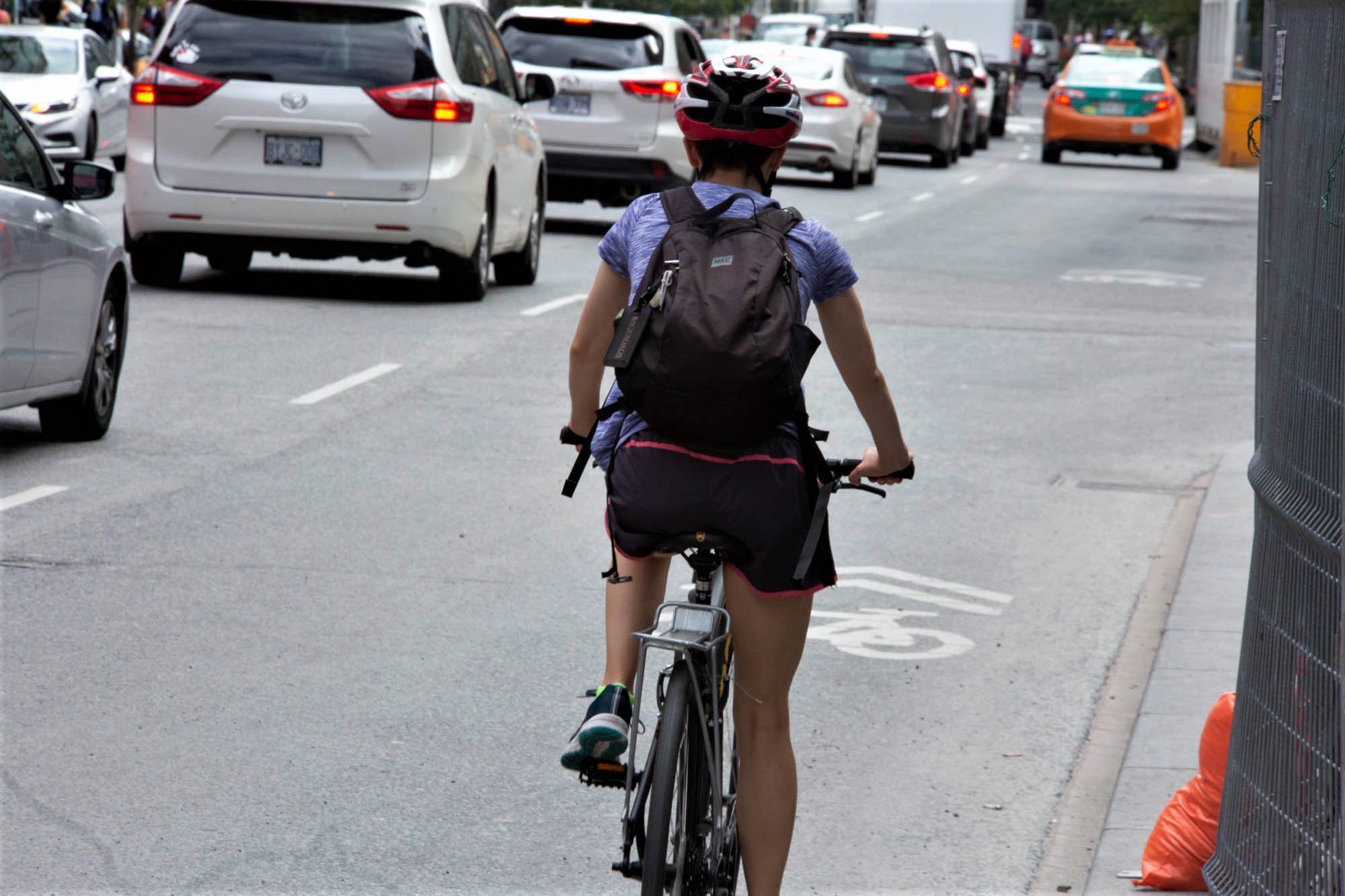
A cyclist in downtown Toronto uses a bike lane
Amsterdam, after World War II, was at risk of turning into another car-centric sea of vehicles. But the oil crunch of the ’70s and protests by anarchist groups greatly reduced the popularity of cars. Stop de kindermoord, stop killing children, became the slogan of resistance to cars. The public would blockade roads where deaths had become especially common. Tired of pedestrian deaths, Amsterdammers wanted change, and their politicians responded. The Dutch government started banning cars in certain areas on Sundays. Over time, bike sales soared. The city introduced ambitious infrastructure projects to encourage bicycle use. Bike lanes separated from car lanes sprang up all over the city, and now the public enjoys a high rate of safety and few road deaths.
In Toronto, and Brampton to an extent, bike lanes are often the on-street variety, sharing the road with cars. These are comparatively more stressful than the Dutch style of lanes separated from motor traffic. Cyclists in Toronto still often have to dodge and weave precariously close to cars, though separated lanes have been introduced on several popular routes (parts of Bloor, Richmond, Adelaide and Woodbine streets, for example), with enthusiastic response from cyclists.
Cycling scenes in Toronto, rarely seen in Brampton
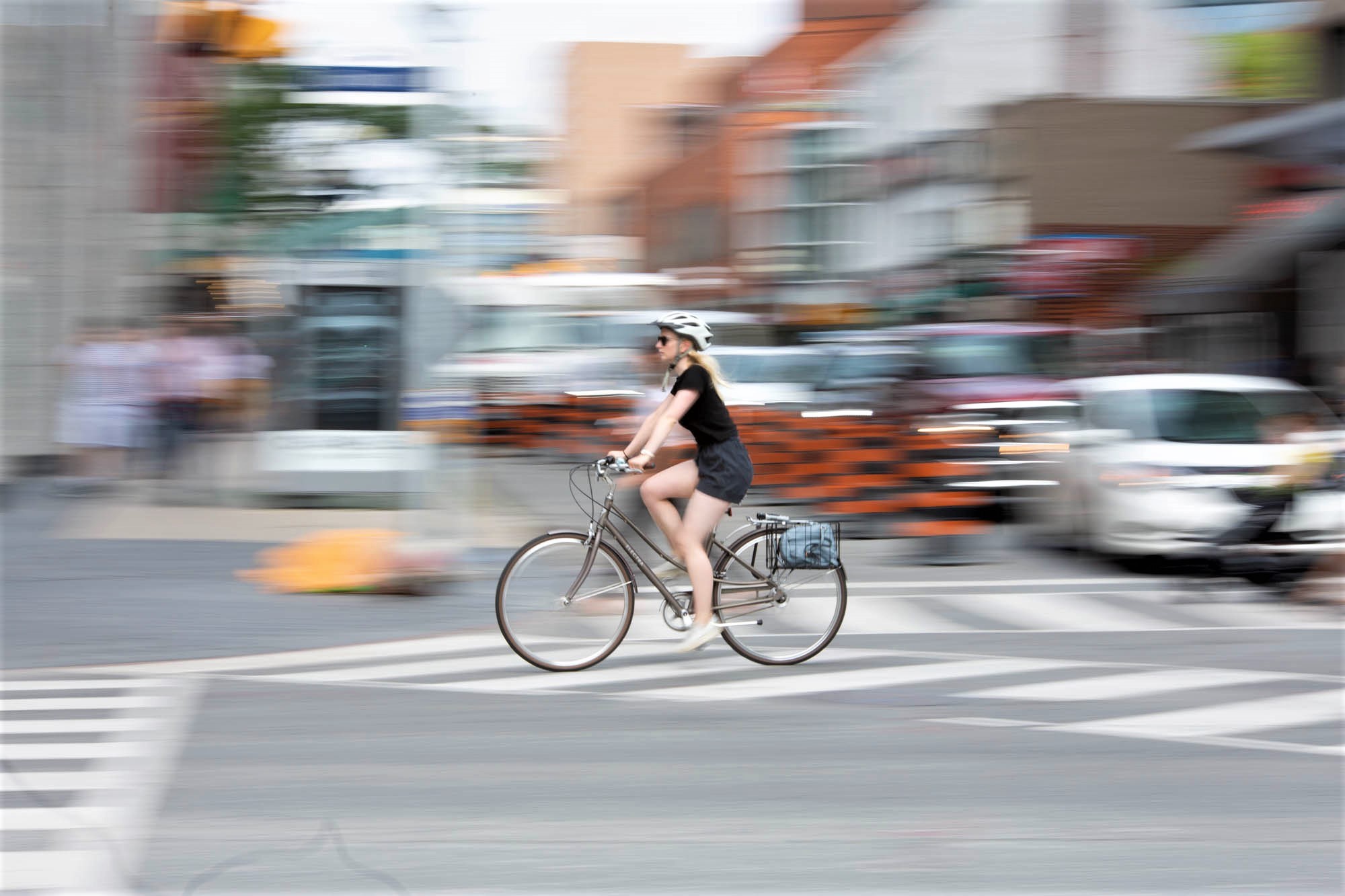
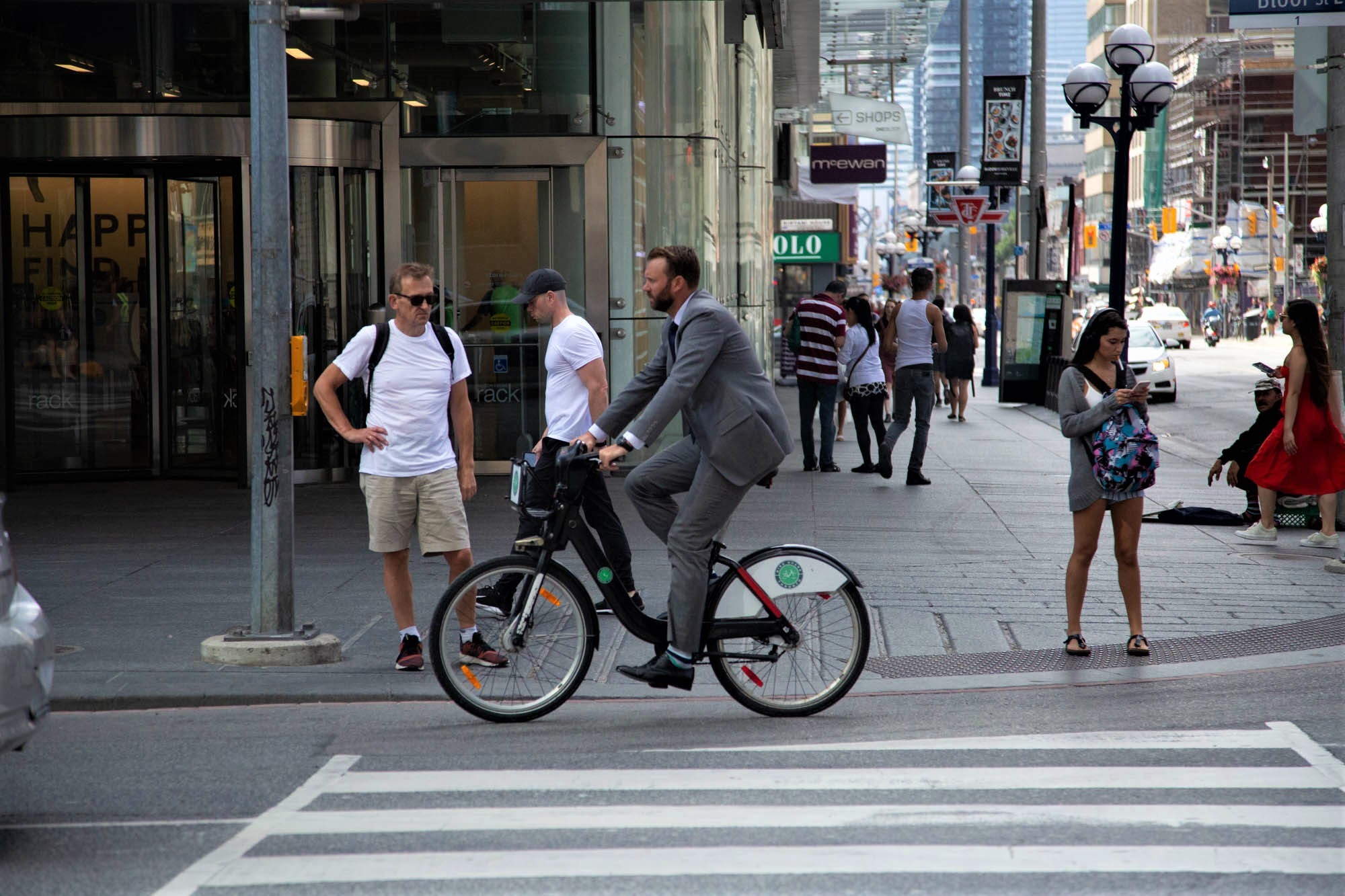
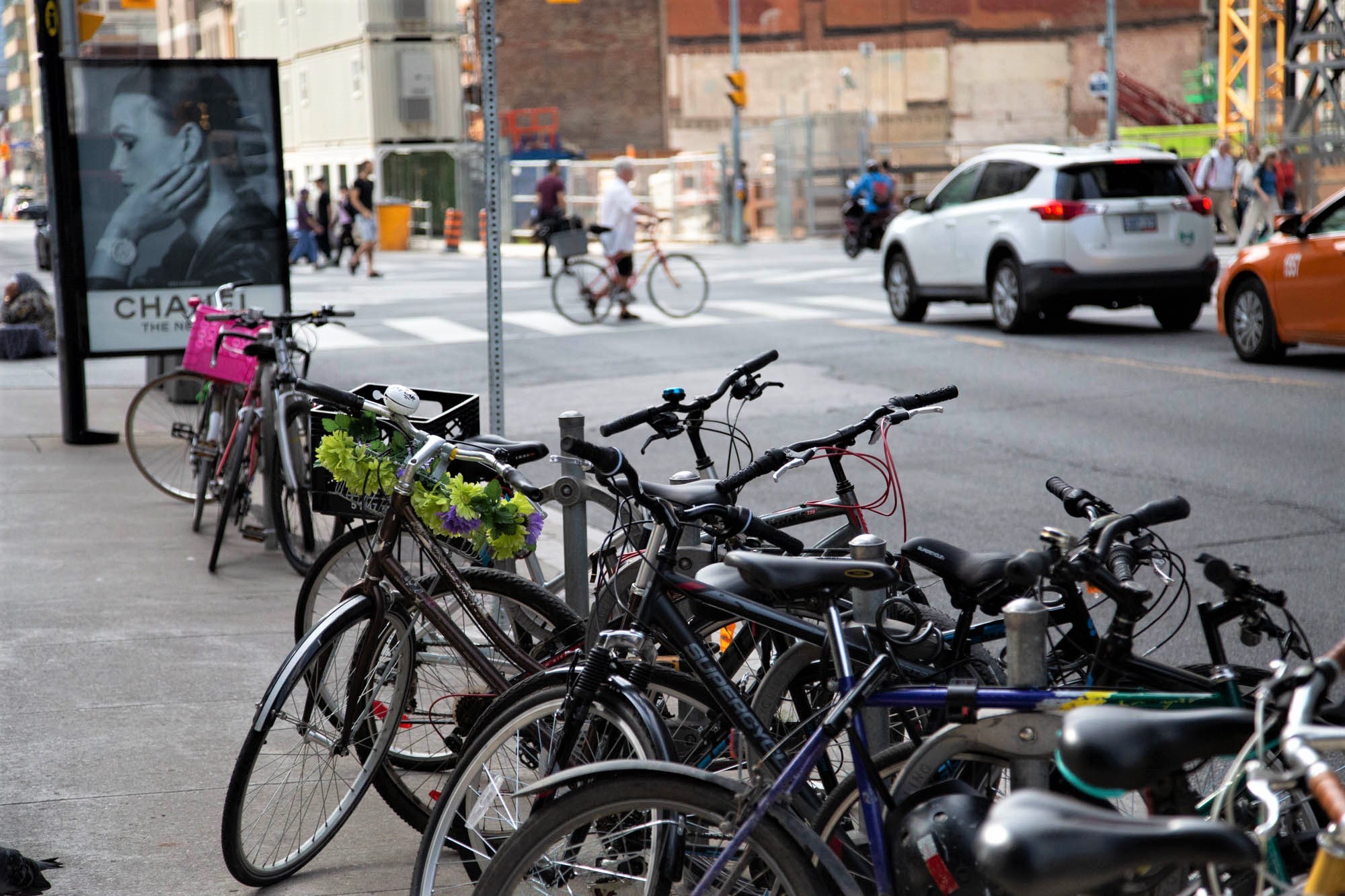
Emily, a French expatriate living in Toronto for over a decade, says she finds the typical bike lanes stressful compared to those in New York, which are usually separated from traffic by physical barriers. “They have real bike lanes for the rider. I think it’s safer in New York. Because bike lanes are more dedicated than here,” she said. “Bay Street by bike is a nightmare; you have to be an advanced bike rider to use it.”
“You have the car corridors and you have the bicycle corridors,” explained Willeke Adriaanse, an assistant project leader for bicycle infrastructure for the City of Amsterdam. “We’re not going to say we are banning the car from the city. That’s not the message. The message is, in order to keep our city livable, considering the growth that it’s in, we have to make choices. And it makes sense, then, to say: keep the car outside of the historic city.”
There are more bicycles in Amsterdam than people. The population of the Dutch capital is 821,000, but there are 847,000 bicycles trekking across the municipality. In fact, the mode of transportation is so popular that bike lanes are becoming overcrowded and the city is running out of room for bike parking. Amsterdam recently introduced a five-year plan to expand the cycling network to include 80,000 new homes and 100,000 new residents. New neighbourhoods springing up will be oriented towards cycling and public transit rather than the North American style of building around highways.
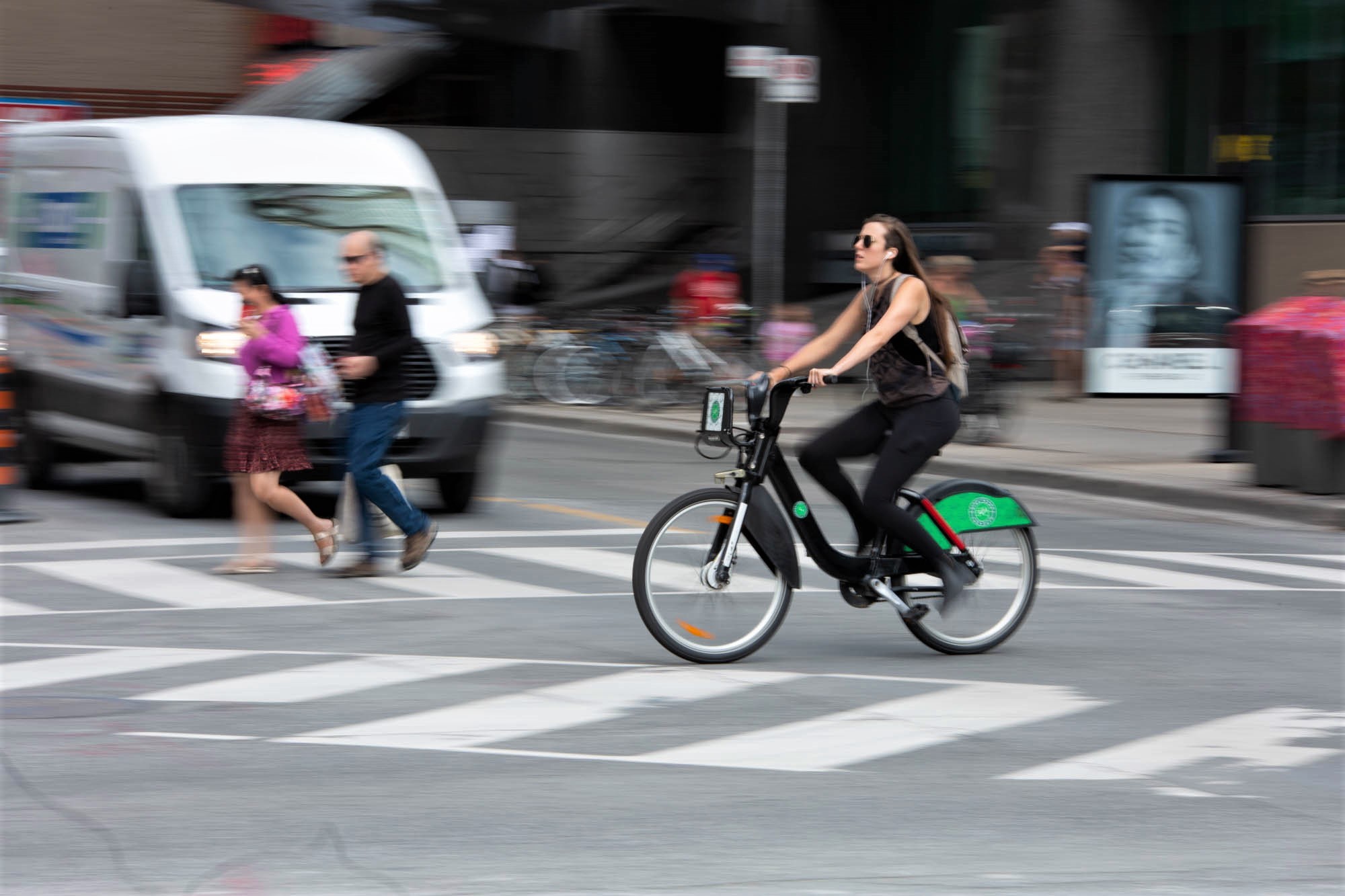
The utility of cycling is increased by the city’s compactness. Though it’s smaller in area than Brampton — 219 square kilometres compared with Brampton’s 266 — Amsterdam has more than twice the population density at 4,908 people per square kilometre, versus 2,230. This means amenities such as recreation, shops, restaurants and places of work are all relatively close by, and cycling is a viable option to get there.
“Especially in the inner city, there are a lot of streets that have a shopping function,” Adriaanse said.
Emphasizing cycling has yielded great economic benefits as well. The city’s five-year plan estimates that cyclists contribute 120 million euros ($180 million) to the Dutch economy. This is partially due to the savings that come from not having to pay for gas, car insurance and maintenance, which creates more disposable income. Ironically, the reduced number of cars on the street means that drivers save 60 million euros ($90 million). The industry that has sprung up from the popularity of biking supports 900 jobs in the Amsterdam economy.
Email: [email protected]
Twitter: @mansoortanweer
Submit a correction about this story


